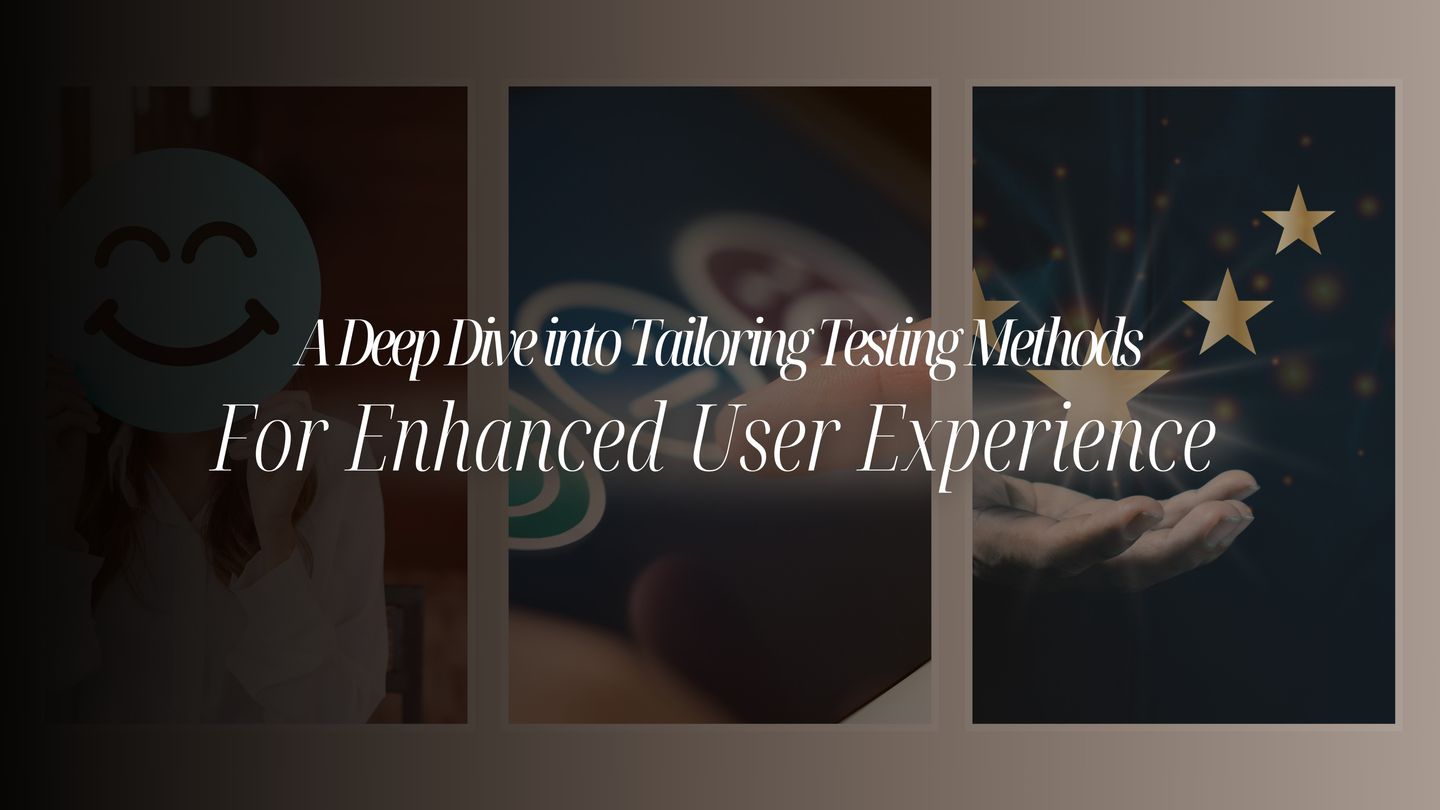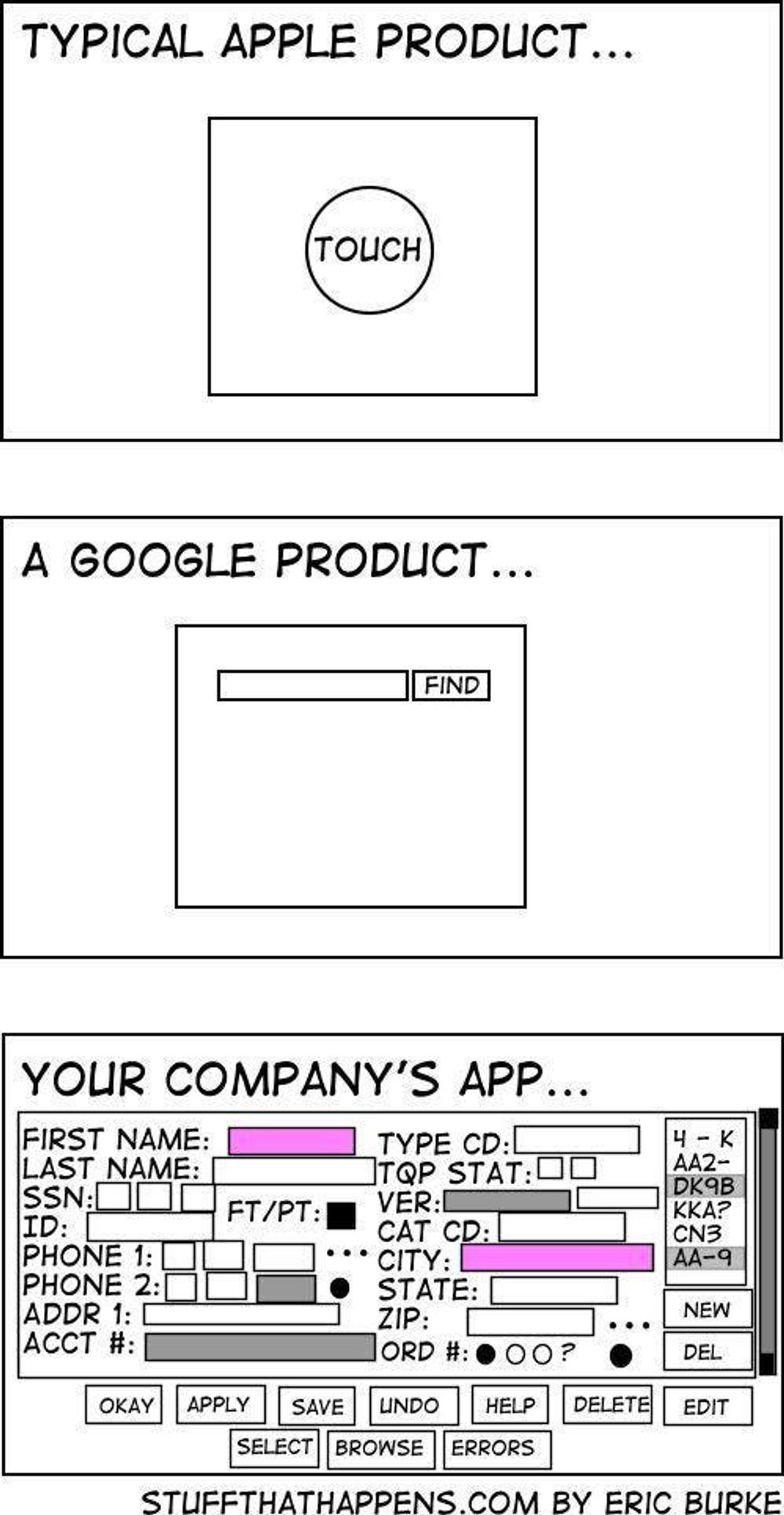A Deep Dive into Tailoring Testing Methods for Enhanced User Experience

As engineers, no matter how much care we put into designing, developing and testing our products, users may not follow the intended path that we have outlined for them. But we cannot blame them for this, as we behave similarly when using other products.
However, to create products customers will love, it is essential to meet their expectations, which is no small feat. It requires time and effort, especially with customers’ constantly changing expectations. Many engineers assume that simply meeting customer requirements is enough to guarantee customer satisfaction, but is this true?
Not necessarily.
To succeed, a product must build user trust and deliver a satisfying user experience. User experience is a delicate balance between pleasure and frustration, and which side users lean towards determines the product's success.
Understanding the customer's pain points is the key to developing valuable features that address their needs.
As engineers, we need to shift our approach and perspective towards our users to develop high-value customer features and tailor how we test. We need to shift our focus from just following the requirements & acceptance criteria to delivering the desired customer experience.
To achieve this, we must understand customer behaviour, including its various characteristics, traits, and non-functional aspects, and address human behavioural elements. Furthermore, it is important to consider customer feedback, emotions, and feelings.
In this article, we will explore how testers can bring more business value and accelerate delivery cycles by systematically shifting perspectives from testing the acceptance criteria to user-focused testing.
Who is a customer-minded tester?
Product and customer-minded testers are those testers who have a lot of interest in the product and the customers themselves. They are curious to understand why users make certain decisions and how they use products. They enjoy being involved in the process of making decisions that lead to greater customer satisfaction.
Understanding the customer and user journey opens up an infinite space for testing and numerous possibilities to explore the product. This, in turn, allows testers to follow their intuition and comprehend the design with the user's intention to engage with it.
We need a core framework that prioritises the user/customer aspect of quality. I recently came across a great definition of Quality in an article by Laura de Paz. According to her, “Quality is not only about zero-bug-backlog or code correctness but instead, quality is a mentality shared by the whole team to deliver sustainable and scalable software that solves the problems that the customer wants to have solved”.
Ultimately, the user's reaction to what we build defines the Quality of our work.
Michael Bolton, a renowned software tester, has created an exciting presentation exploring the role of emotions in software testing. He delves into how understanding and managing emotions can contribute to more effective and efficient testing practices.
Building features is easy; testing those can be easy, too. However, it can be challenging to understand the people you’re trying to build for, making it more difficult to build the right features for the right people and test to meet their needs.
As engineers, we must understand the true meaning of UI, UX and Usability, even when it's not immediately apparent.
Users experience a feeling because the product evokes certain emotions. According to a study by PWC, even when people love a company or product, 59% will walk away after several bad experiences, 17% after just one bad experience.
This shows the importance of understanding the three aspects of a product, UI, UX and Usability. Even though they are intertwined, understanding their differences as a customer-minded tester is imperative to building a product customers would love.
What is usability, and how can testers contribute to it?
Usability is the extent to which a product can be used effectively, efficiently, and satisfactorily in a specified context.

To understand the meaning of usability practically, let’s use a scenario you might be familiar with: booking an Uber. When booking an Uber, the ease of finding a ride is a defining usability factor. Therefore, during testing, your tests would ideally answer the following questions.
- How easy is it to use the application?
- Do users just get it?
- Does the application feel fast?
Usability and UI/UX testing enable testers to ensure that products meet users' needs and provide a satisfying experience. However, in many projects, user experience is often an afterthought. Why is this the case?
Why does user experience become an afterthought?
It is essential to know when to prioritise UX optimisation over feature development. Without this understanding, the user experience can often be suboptimal.
The "Optimise later" strategy is a common approach where UX takes a back seat to feature development. For instance, an address field in an application can be optimised by using autocomplete based on the user's GPS location. This feature can significantly reduce the user's burden of manually typing the complete address every time. However, it could be deprioritised as it might not be considered a critical feature.
In product development, teams often focus on building features that seem essential from the company’s perspective but may not actually be that useful or valuable to users. It would have been better if they prioritised optimisations to make the product more intuitive and seamless.
The reality is that developing a truly simple and intuitive user experience requires teams to have dedication, work hard at understanding user needs, and have the patience to improve the product iteratively. It's no wonder that Apple and Google are worth trillions, given the billions of people who love their products.

What makes you a Superhero?
We, as testers, can enhance customer satisfaction by participating in product decision-making. Understanding the rationale behind decisions and how customers use the product makes us a Superhero. These are the crucial attributes that could help to be a Superhero.
- Be flexible and agile.
- Think like your users; prioritise how they feel and what they do.
- Discover the significance of verification and validation prioritising UX.
- Leverage automation and strategic testing for exceptional user experiences.
- Embrace the tester's mindset; deeply understand your product.
- Be customer advocates.
- Leverage the power of user personas based on data.
- Rely on user profiling, statistics, reviews, and analytics.
- Get your users involved more, and harness the power of the crowd with Beta Testing strategies.
- And the most crucial thing: Ask Ask more questions!!!
As a tester, you have the power not only to ensure the functionality of the product but also to champion the user experience and become a superhero for your customers.
To become a customer-focused tester, developing an experience strategy based on the key points above and incorporating personal elements into the narrative is essential. This commitment will help you leverage your skills and experiences for the greater good of the end-users.
Define an experience strategy:
Supposing is good. Finding out is better. - Mark Twain
An experience strategy is a well-defined principle influencing all technology, features, and interface decisions. This strategy guides the team and ensures that the customer's perspective is maintained throughout the design process and as the product develops. As a QA, you can contribute a lot here by adding insights from the customer advocate's point of view.
The crucial element that drives experience strategy is having empathy for end users.
As a customer advocate, the key to creating relatable experiences is to recall situations where you, as a user, faced challenges with a product due to poor design or functionality. Understand the frustration, confusion, or even delight that these experiences brought.
This empathy can then be channelled into the testing approach to ensure that the user's experience is taken into account. This approach to testing extends beyond functionality and design as we seek to understand the user's emotional journey.
Revisiting the Uber example we used earlier, the most critical functionality is the ability to "Book a cab in 1-click". However, from a real end-user's perspective, the booking process is not a linear flow.
As a user, you would check the availability of a cab and then look for other options to compare pricing or alternative travel options, which may lead to context switching and interruptions.
When we develop our experience strategy, we make sure to consider the emotional experience of the user as much as the functional aspects. To accomplish this, we take into account both familiar and unfamiliar user interactions and use them to identify patterns. We then devise testing around those user flows, going beyond basic acceptance criteria. This approach ensures that we create a user experience that is both functional and emotionally satisfying.
Define a user-centered testing(UCT) approach:
A UCT is a testing approach in which the end users are identified, their goals and needs are understood, the application is designed to support those users and their goals, and it is tested with those users to improve until optimal. It comprises of 5 key aspects, as follows:
- Holistic approach: Goes beyond individual project tasks and looks at the bigger picture, focusing on integrating product strategy with user needs.
- Long-term vision: Considers the future direction of the product or service, often spanning multiple years of the product lifecycle.
- Business alignment: Ensures UX goals align with business objectives, market demands, and technological trends.
- Research-driven: In addition to usability testing, it dives deep into market research, competitor analysis, and user behaviour trends to inform design decisions and ensure the design is "future-proof".
- Stakeholder collaboration: Engages with broader stakeholders, including business leaders, marketers, and external partners or vendors.
Balancing these 5 aspects when defining your testing strategy would help you master user-centric testing by developing a comprehensive roadmap that guides you through diverse perspectives.
It's not just about individual tests but rather about 'seeing the big picture.'
A thoughtful user-centric testing approach ensures that every testing effort contributes to the overarching success of your product. It involves immediate improvements and a strategic understanding of long-term vision.
By embracing these elements, you can align your testing strategy with the broader goals of user satisfaction and product excellence, ensuring a journey that leads to sustained success in the ever-evolving software engineering landscape.
In the end, these are the questions we ask ourselves as engineers:
- Are we building the right things?
- Is it easy to use?
- Do our users want to use it?
In summary, to ensure a better user experience, all disciplines should collaborate and prioritise their product's user experience, as quality isn't just about the number of bugs; it's about user impact.
MagicPod is a no-code AI-driven test automation platform for testing mobile and web applications designed to speed up release cycles. Unlike traditional "record & playback" tools, MagicPod uses an AI self-healing mechanism. This means your test scripts are automatically updated when the application's UI changes, significantly reducing maintenance overhead and helping teams focus on development.

